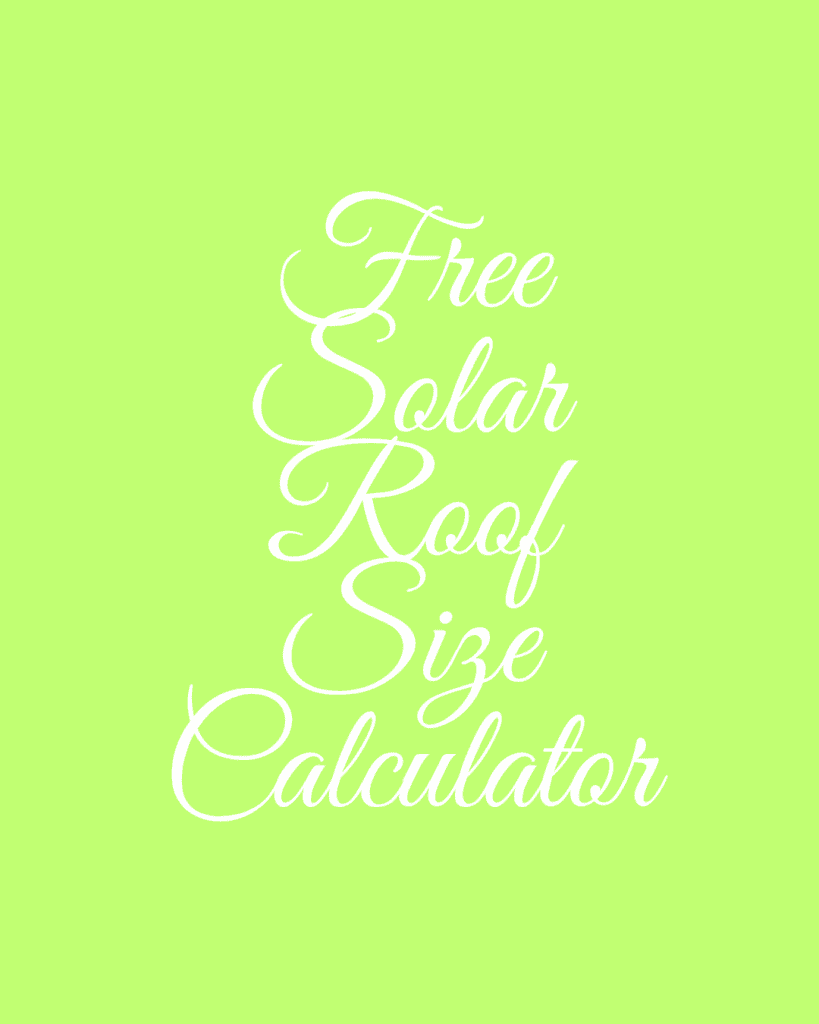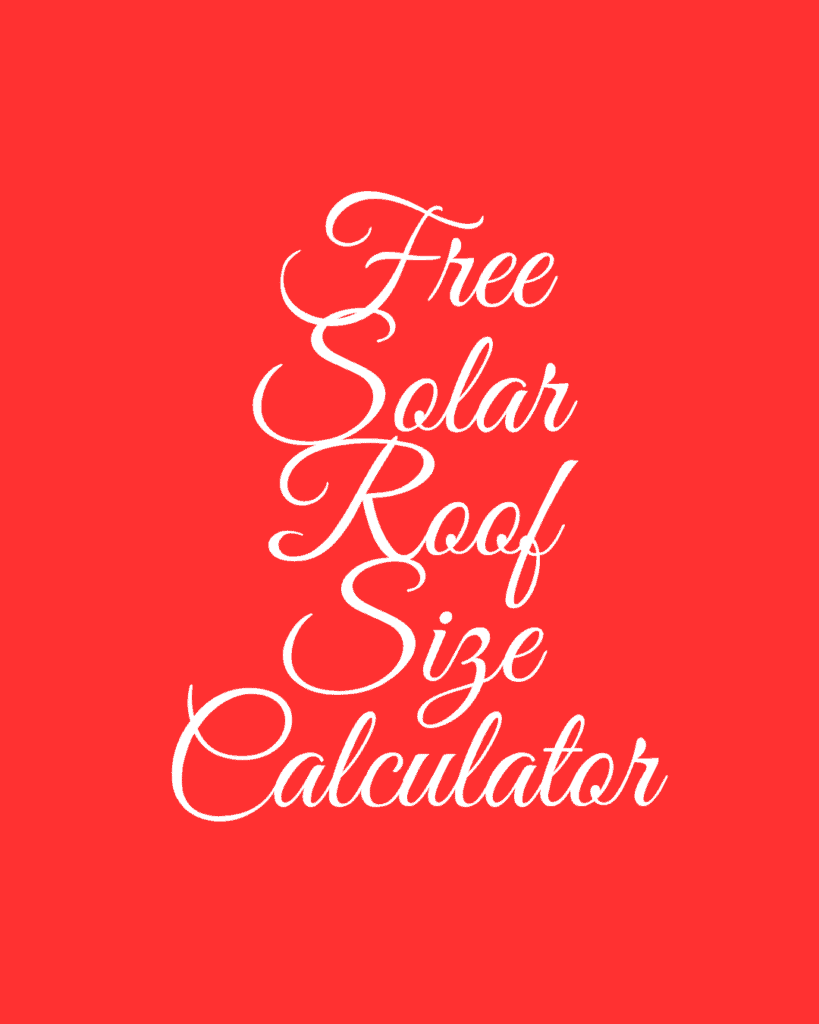Solar Roof Size Calculator
Solar Roof Size Calculator
Use this solar calculator to estimate how much energy a residential rooftop system could generate, taking into account roof size, orientation/shading needs and annual energy use as factors.

Each installation is different, and many factors impact its success. With this tool in hand, it allows for accurate estimations that will help bring your project to a successful conclusion.
Roof Area
Installing a solar power system relies heavily on roof size for success. As larger solar energy systems require more panels – and larger panels cost more – larger roofs will determine how much energy can be produced from solar. Other factors will impact how many panels you need, including your electricity usage goals, home location specifications and net metering arrangements available through utilities in your area.
Once you know the size of your roof, it’s time to calculate how many solar panels will fit on it. There are numerous online calculators that will use electricity bills and other information about you and your energy use to estimate energy requirements and recommend an ideal system size for you.
These solar calculators typically use satellite imagery and computing power to identify an available area on your rooftop for solar panel installation, then use this data to calculate how many panels will be necessary to provide enough energy for you and offset your consumption of energy.
Project Sunroof can help you determine how many solar panels your home needs by using high-resolution satellite imagery and computing power to analyze its rooftop and provide a detailed report about its solar potential.
The process is quick and straightforward. First, identify the North-facing roof area of your house by clicking on the map. Next, mark that section with a marker (red circle). Using our tool, we’ll automatically calculate your roof’s total area, solar wattage capacity capacity and average daily solar energy yield estimates*.
Solar energy output depends on factors like system wattage and panel efficiency rather than just roof surface area alone. To make sure you get maximum benefit out of your solar power system, it is crucial that parts of your roof that cannot be utilized for solar installation such as shaded areas are excluded, since these will only produce minimal amounts of energy.
Solar Irradiance
Solar Irradiance measures how much sunlight reaches a solar panel. The more irradiance a solar panel receives, the more power it generates. Irradiance of any location depends upon latitude and its sun’s position throughout the year – solar calculators use this information to predict how much energy a PV system will produce per hour as well as annual total output of Kilowatt-Hours generated by its PV systems.

Solar PV systems are priced per kilowatt-hour, meaning the more energy your panels generate, the lower your monthly electricity costs will be. How many kilowatt-hours a PV system produces will depend on both its energy usage and orientation; solar calculators can help determine how many kilowatt-hours are consumed annually in your home and compare this figure against average annual usage in your area.
These calculators will assist in selecting the optimal solar panel system size to install on your home, ensuring you don’t oversizing to reduce upfront costs or undersizing to limit energy savings. In addition, solar calculators provide estimates as to how much your system will offset energy costs based on your home’s current usage and local rates.
Aurora solar design software makes this process very straightforward. Instead of relying on manual measurements at site models, Aurora can automatically calculate irradiance for every solar panel surface at each daylight hour throughout the year – this information provides invaluable support for optimizing solar energy systems on residential and commercial sites alike. This data also assists with creating shade reports which serve as invaluable aids for optimizing solar energy systems on sites.
Calculating irradiance requires many complex calculations that involve multiple variables, including the solar constant (an average measure of how much sunlight reaches Earth), time of day, azimuth angle and altitude. Since all these factors depend on your location, software needs to be precise if valid results are desired.
Roof Load
Structural integrity of your roof is an integral factor when installing solar energy systems, according to local building codes and inspection requirements. Without proper load calculations and roof assessment before solar panel installations begin, solar panels could damage its integrity – creating safety hazards as well as financial burdens from costly repairs that might eventually cause collapse of the entire structure.
Rooftop solar systems weigh in at approximately 100 pounds when taking into account all components, from panels and mounting equipment to panels themselves, depending on brand and mounting method. Just the mounting equipment alone weighs an estimated 3 to 4 pounds per square foot while individual panels may weigh up to 50 pounds each – this weighty load requires extensive roof support, so prior to proceeding with installation of any solar system on any rooftop it would be wise to consult an engineer and assess its capacity first.
An architect will use wind pressure and force calculations at module and rail attachment points, as well as weight distribution throughout the roof area, to calculate wind loads. They may also assess potential snow loads using local climate data and detailed analyses of its structure.
Calculating the resultant force can be challenging due to its dependence on wind speed at your site and directionality of winds. Furthermore, force is determined by factors like module length and rail spacing at local sites as well as location within roof as each module will exert different forces at various spots within roof.
Once an engineer has collected this information, he or she will conduct an assessment of your roof’s capacity to support a solar array and any dynamic loads, and make recommendations if further strengthening may be necessary such as additional joists or trusses before installing solar systems.
Solar installers often collaborate with structural engineers in gathering on-site information prior to any professional evaluation, in order to verify numerical data’s accuracy and perform complex analyses that ensure your solar system doesn’t exceed your roof’s structural capacity. This partnership ensures a safe and cost-effective installation that provides your home with plenty of clean energy at minimal costs.
Panel Weight
Weight of solar panel systems is an essential factor. This includes panels, mounting hardware and an inverter (usually mounted to the roof). A residential 6.6kilowatt solar array with 20 panels may weigh as much as 800 pounds! Most roofs can support this weight, however; to be safe it’s wise to consult your provider/structural engineer in advance to make sure your photovoltaic installation can handle its load successfully.
Weight of solar panels also varies with their type. Residential panels usually comprised of monocrystalline or polycrystalline silicon solar cells may weigh from 33-50 pounds each; monocrystalline solar cells tend to be slightly heavier due to differences in manufacturing process.

Energy usage can have an enormous effect on the size and weight of your solar system. You can learn about your usage via electricity bills or an online energy consumption calculator; this will enable you to determine how many solar panels are necessary as well as its maximum capacity.
Make sure your solar panels are installed with an angle that faces the sun; this may necessitate moving or adjusting other structures on your rooftop, such as chimneys, vents or antennas, to achieve this optimal solar angle and ensure proper compatibility for your panels.
Once you have decided upon the size and layout of your solar panel system, our free solar exploration tool can help you visualize how many panels would fit onto your roof. For an accurate assessment of performance and energy production from your system, contact a local installation company. Energy consultants will use factors like peak sun hours, roof orientation, roof orientation slope etc to assess its solar potential as they create a detailed design for installation – they might even suggest battery storage solutions that best meet your home or business’s energy needs if going for all-in-one solar solutions!
